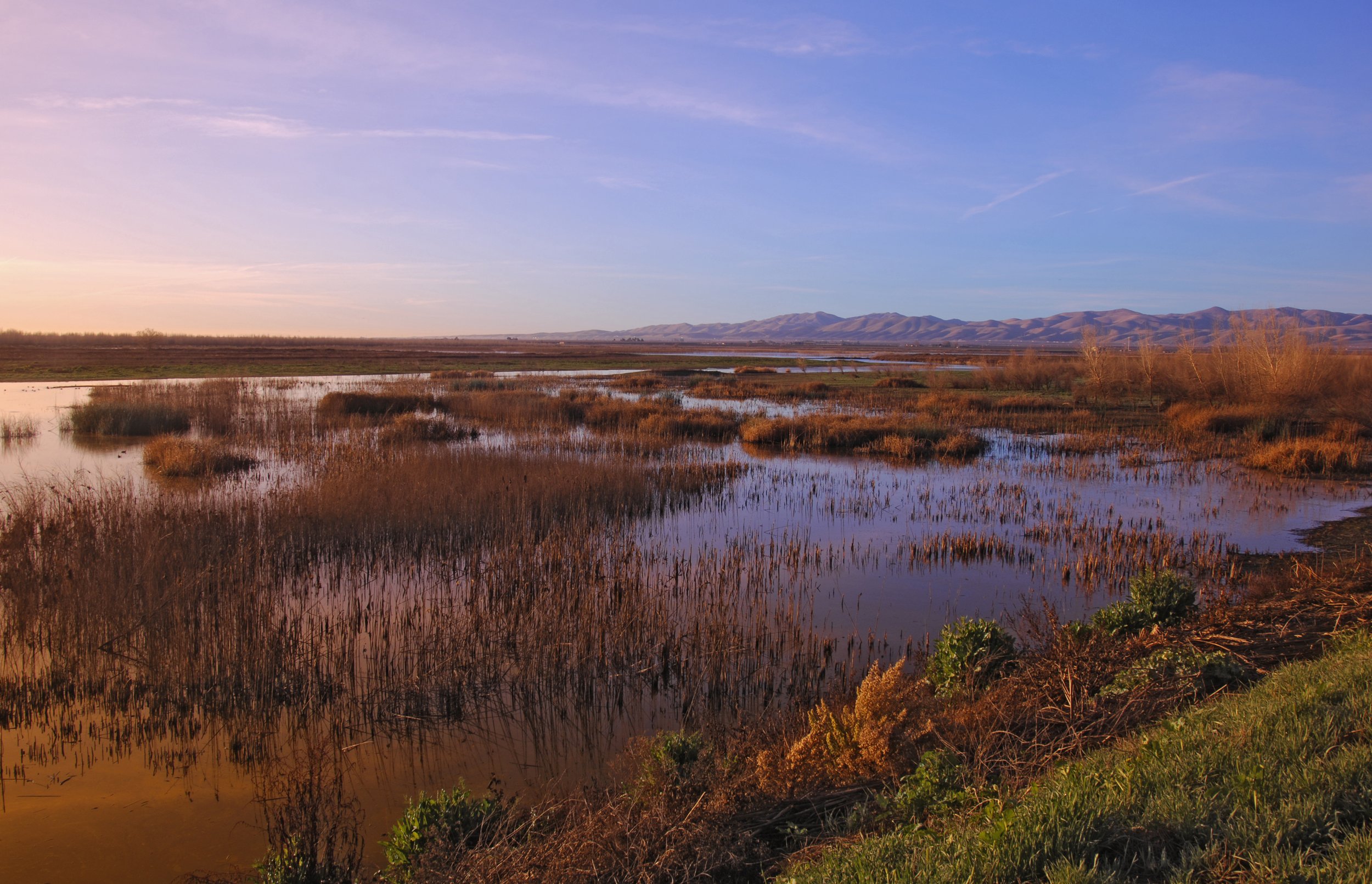Thinking Like a Floodplain: How Dos Rios Ranch State Park Was Born
Dos Rios Ranch, west of Modesto, is the newest California State Park as of 2024. Initiated by TRT over twenty years ago, this park restores 2,100 acres of critical floodplain where the Tuolumne and the San Joaquin Rivers converge.
California’s Central Valley was once home to four million acres of floodplains before 70% of these ecosystems were engineered and drained for agricultural purposes in the mid-1800s. The restored floodplain at Dos Rios Ranch will once again connect disparate habitats and provide a place for native grasses, tule reeds, willows, sycamores, oaks, and alders; baby salmon and steelhead trout; and hundreds of bird, mammal, and insect species.
Dos Rios’s transition from a working ranch to a public park has been a long time in the making. In the early 2000s, TRT’s Director Patrick Koepele began connecting with private landowners in search of those who shared a passion and vision for wetland restoration. Patrick spent endless hours pouring over parcel maps of riverside properties and conducting research at the County Recorder’s Office. He built a sizable list through determined organization and wrote individual letters inviting landowners into conversation.
Of the cold-call outreach that Patrick conducted, he shares that “it was a pleasure to meet with landowners of the Dos Rios Ranch, hear about some of the challenges they faced farming next to the river, and explain our vision for a healthier river.”
During this time, challenges like flooding were a central concern. A series of floods, including the January 1997 floods, brought considerable damage to riparian communities throughout California, and the banks of the Tuolumne were no exception. Patrick says of this time that “people realized we needed to give rivers more room to do what they do naturally—flood! But also that flooding could be coupled with parks and recreation.”
After several years of TRT’s diligent work, Patrick met the Lyons family, and the seeds of an innovative partnership began to germinate.
The Lyons family, Central Valley farmers, had a conservation ethic already threading through their agricultural lives. Bill Lyons Sr, a third-generation farmer, worked with the US Fish and Wildlife Service on the San Joaquin River National Wildlife Refuge, and the family had initiated ecological projects of their own. As one example, they grew alfalfa and forage mix to benefit the threatened Aleutian Cackling Goose. Due in part to the work of the Lyons family and others along the goose’s migratory route, this species recovered and is now off the endangered species list—a rare reversal.
Once the Lyons family committed to returning Dos Rios Ranch to its pre-agricultural character, purchasing the land took ten years. This sense of time and labor is imbued with the logic of the river itself: A slow, steady trickle of work turns into a flowing project, endlessly interconnected with many collaborators along the way.
Corey Brown, Senior Advisor at Resources Legacy Fund, supported the evolution of Dos Rios Ranch. He reflects back on this long form project saying: “It takes thousands of years for a river to form and for the complex web of wildlife, fisheries, and native plants that rely on a river to evolve. While it may seem to us that it takes many years to accomplish projects like Dos Rios, it is a very short time in the life of the river. A hundred years from now, families will continue to enjoy this magical place and wonder who had the vision to protect and restore this part of the Tuolumne so many years ago.”
The restorative vision has been a deeply collaborative one. To facilitate the land transfer at Dos Rios Ranch, TRT sought out a partnership from fellow nonprofit River Partners to take the title on the land. By 2012, everything was in place: TRT and River Partners had raised $22 million to buy the ranch, securing an ongoing victory for people, plants, and animals who call this valley floodplain home.
Over the next ten years, River Partners conducted the large-scale restoration work on-site, transforming constrained and overworked land into a resilient and porous wetland. Today, with restoration nearly complete, the transfer of Dos Rios Ranch to the California State Parks system is near; the park will open to the public in 2024.
The ecological power of Dos Rios Ranch reverberates through the Central Valley and beyond, returning historic landscapes to their pre-European character, creating resilient flood-ready lands, enabling the return of flourishing salmon populations, making a notable State Park in Modesto, and improving downstream ecosystem health all the way to the Pacific OceanWhen asked what excites him most about this project’s accomplishments, Patrick turns again to the future: “the trees are still relatively small, but I imagine in fifty-sisxty years, there will be gallery forests of big Valley Oaks and Cottonwoods that frame views of the distant Coast Range. Thousands of birds will flock to the area, and people will get a chance to walk through a riparian forest, paddle on the river, or fish the waters.”
The collaborative creation of Dos Rios speaks to networks of support that play out over expansive timescales and geographies with many species, ecosystems, and human communities in partnership throughout the watershed. This collective energy connects whole ecosystems and supports river health from the Central Valley to the Bay-Delta and beyond.

